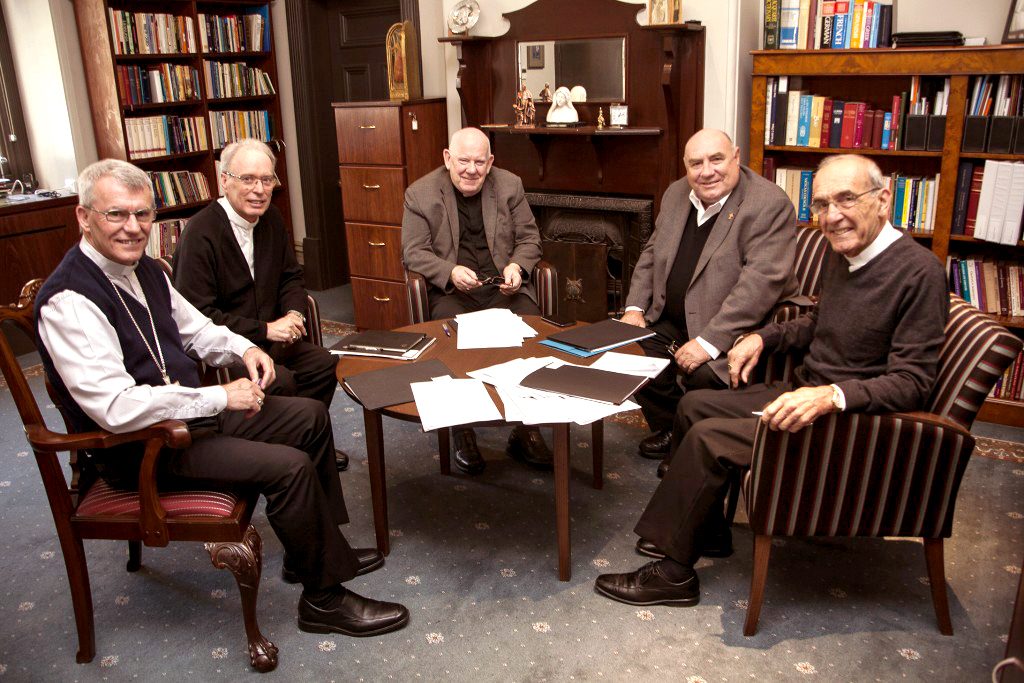By Caroline Smith
When then-Father Justin Bianchini was chosen to become Bishop of the Geraldton Diocese back in 1992, he viewed the development with trepidation, but also with a sense that God had called him to take up the position, which was in a country diocese similar to some parishes he had served in – and loved – before.
“Initially I was overwhelmed. However the fact that the request comes from the Pope, the fact that a process of wide consultation happened, meant it seemed to be what God wanted,” he said.
“And when God wants something for you, God always gives you the Grace. So I accepted.
“The fact that the Geraldton Diocese was a country diocese, was appealing to me. Through my childhood years in New Norcia, my 7 years as Parish Priest in Kalgoorlie as well as some time in Kondinin Parish, I have always been at home with country people.”

He added that because Geraldton was a thinly-populated diocese, it was easier to get to know local people and parishioners, which made his role as ‘shepherd’ much easier.
Last month, Bishop Bianchini retired from his position, after 25 years – making him the longest serving Bishop of the diocese. His successor, Bishop Michael Morrissey, was ordained on Wednesday 28 June.
Looking back on his time at the helm in Geraldton, he said one of the biggest challenges was finding and appointing suitable clergy to the various parishes.
“When I was made Bishop of Geraldton, (Emeritus) Archbishop Goody said to me, ‘Geraldton Diocese has never been self-sufficient in priests, so keep looking for suitable clergy’,” Bishop Bianchini said.
“In the Diocese we have tried to foster vocations to the Priesthood but they have not been forthcoming, so beyond the priests that I began with in 1992, I have down the years obtained priests from the Philippines, Poland, Vietnam, the African countries and India. It has worked well since a good number of our Catholics now come from these countries.”
Building and strengthening the Church through evangelisation was another challenge, he added, and something which was a constant effort in schools and other locations.
“One initiative I took was to develop and implement a Diocesan Policy for the Celebration of the Sacraments of Initiation. Its thrust, apart from coordinating the celebration of the Sacraments, was to help families share their faith in the home, especially when preparing children for the Sacraments of Reconciliation, Eucharist and Confirmation,” Bishop Bianchini said.
“While the practice of the Faith is not strong for many, people still are wanting Baptism and the Sacraments for their children. The Policy we developed is parish based, family centred and school supported.”
Reflecting on happy memories of his time as Bishop, he includes the Geraldton Diocese’s centenary in 1998, together with his meeting with Pope John Paul in Rome, during one of the Ad Limina visits which bishops are obliged to take every five years.
“The highlight of the visit was meeting the Pope. Pope John Paul II gave each of us personal time. We also had Mass with him and even on one occasion a meal with him,” Bishop Bianchini said.
“The feelings of joy, inspiration and elation engendered by these contacts with the Pope, is indescribable.
“The Centenary of the Diocese of Geraldton in 1998 is also a great memory. While we had many celebrations throughout the year in each parish and a very special Diocesan one toward the end, it was also a time of renewal of our Faith.”
One part of this renewal came through the Vision for the Diocese, which was developed during the many meetings and reflections which took place during the centenary.
It reads: We are a welcoming community which reaches out to all. Celebrating the presence of Christ. Joyfully living out our Christian calling across distance and diversity.
Upon his retirement, Bishop Bianchini plans to return to Perth, where his family lives. He said that while he doesn’t often consider the significance of being the longest-serving Bishop of Geraldton, he had been honoured to serve the people of the Diocese for an extended period.
“I do feel honoured to have been the Shepherd of such a wonderful group of the People of God over those years. As I have given myself to the Priests, Religious and Lay People, in turn I have been loved and inspired by them in many ways,” he said.
“I know particularly the value of the Bishop being in touch with his people. It is similar to the role of Priests and the Religious in the Diocese. We are, as it were, the fulltime workers in the Church or what you might call the ‘God people’.
“None of us are closer to God than any of the Lay People, because God loves us all equally and is as close to one as He is to another. However when a Bishop, Priest or Religious knows, acknowledges and loves a Lay person, even in simple ways, then such a person consciously or unconsciously thinks ‘maybe I am known, acknowledged and loved of God’.”